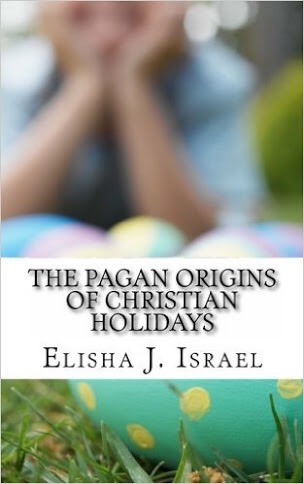
“It ought to be known that the observance of Lent did not exist, as long as the primitive church retained its perfection unbroken.” – Cassianus, 5th Century
Lent is the “fortieth” day before Easter and is observed in many Christian denominations. This is the six and one half week period that lasts from Ash Wednesday to Easter Sunday. During Lent Christians fast and refrain from various pleasures. This is said to be for the purpose of preparing to commemorate the passion, death, and resurrection of Christ.
Although the Holy Scriptures do ordain a period of fasting in commemoration of Christ, this was not the forty day period known as as Lent. In the Book of Leviticus it is written, “And the Lord spake unto Moses, saying, Also on the tenth day of this seventh month there shall be a day of atonement: it shall be an holy convocation (holy gathering) unto you; and he shall afflict your souls (fast)…” – Leviticus 23:26-27. Furthermore, Paul prophesied of such a doctrine concerning unholy fasting in his epistle to Timothy. I Timothy 4:1-3 reads as follows:
“Now the Spirit speaketh expressly, that in the latter times some shall depart from the faith, giving heed to seducing spirits, and doctrines of devils;
Speaking lies in hypocrisy; having their conscience seared with a hot iron;
Forbidding to marry, and commanding to abstain from meats, which God hath created to be received with thanksgiving of them which believe and know the truth.”
Paul is specifically prophesying of the rise of the Catholic faith. In Catholicism, which is the mother of all other Christian denominations, priests are prohibited from getting married. In addition, they have instituted a spring fast attributed to the suffering of Christ. However, such a fast and its rituals are rooted not in Christ but in the pre-Christian Pagan worship of antiquity.
The word Lent means “spring” and derived from the Old English word “Lencten”. Spiritually speaking, all roads lead to Babylon and such is the case in regard to the forty day spring fasts. In one version of the Babylonian myth, Tammuz the great hunter was slain while hunting a wild boar. Devotees mourned for him through weeping ceremonies for forty days. During the days of Ezekiel this ritual was even found among the Israelites. Ezekiel writes:
“He said also unto me, Turn thee yet again, and thou shalt see greater abominations that they do. Then he brought me to the door of the gate of the Lord’s house which was toward the north; and, behold, there sat women weeping for Tammuz.” (Ezekiel 8:13-14)

Worshippers of Tammuz wept with his consort Ishtar believing that his rebirth would mean the regeneration of life within nature. Similar feasts are found throughout pagan peoples of antiquity. For instance, the ancient Egyptians observed a forty day fast in honor of Osiris.
The sign of the cross rubbed with ashes is not exclusive to Constantinian Christianity; it is found throughout the ancient world and was used as prominent symbol of the pagan Gods. For example, “the Tau cross was inscribed on the foreheads of initiates into the Mysteries of Mithras.” It is also interesting to note that the act of simply sprinkling ashes directly on the head, which is also done on Ash Wednesday, was done in honor of the pagan Norse god Odin as well. The placing of ashes above the brow always occured on Wednesday, the day named in honor of Odin.

If it is true as Cassianus attests that, “… the observance of Lent did not exist, as long as the primitive church retained its perfection unbroken” (John Cassianus, Conference 21, The First Conference of Abbot Theonas on the Relaxtion During the Fifty Days, Chapter 30.), why is it observed today? Within the Holy Scriptures we find no commandment to observe such a fast. Undoubtedly, if the Christian veneer of Lent is wiped away, we see what mirrors an ancient pagan fast.
The above piece was taken from Elisha Israel’s book, The Pagan Origins of Christain Holidays:

Purchase the book here.

More Stories
PANDEMIC UPDATE: ISRAEL, THE CHURCH OF JESUS!
The Mark of The Beast
Pope prepares for Mark of the Beast with consideration of ‘universal basic wage’